The first 13 sections of this guide have focused attention on the important mechanical components found on your bicycle. This final section will describe two major nonmechanical components—saddles and seatposts. These non- mechanical items are often overlooked and neglected. We simply accept what came with our bicycles even though it reduces our riding pleasure and comfort. That is both unfortunate and unnecessary, since these components, which your body contacts as you ride, can be easily upgraded.
Saddles
A bicycle saddle is a very personal item and every rider has to make a judgment about what best suits his or her backside. In the past two or three years, there have been some improvements in this critical area. Today you have more options to choose from, though it’s hard to separate the facts from the advertising hype.
As with so many other bicycle components, when you pick a new saddle you have to strike a compromise. In this case the compromise is between a wide, soft saddle that’s more comfortable for short rides and a narrow, firm saddle that’s more comfortable for long-distance rides. The narrow, firm saddle doesn’t chafe your thighs, it’s ergonomically more efficient, and it keeps you from sliding around. Narrow saddles don’t have to be extra-firm. The latest gel padded saddles combine good support with medium firmness. The best way to pick a new saddle is to borrow one from a friend and try it on a long ride.
Saddle Differences
My own feelings (that’s the right word because the subject doesn’t lend itself to engineering evaluation) can be summarized as follows:
• The beginner has different needs than the experienced rider. You start out needing a soft, wide saddle. Later, when your backside becomes inured to the pedaling process, you switch to something narrower and firmer that’s easier to pedal.
• If you ride in an upright position, you put more weight on the saddle and you need a wider and (perhaps) softer saddle. Optimum saddle width at the rear varies from 8 inches for a sprung “Roadster” saddle on a bicycle with upright handlebars to 5½ inches for a racing saddle to as little as 4 inches for a track racing saddle. As you lean further for ward and put more weight on your hands, your saddle can be narrower and firmer.
• The wide, soft saddle that feels wonderful for a 10-minute ride may be less comfortable for a century. The problem is that wide, soft saddles cause more friction. They waste energy and chafe your legs after a while. If your average ride is 30 to 50 miles, you’ll probably prefer a firmer and narrower saddle.
• You need to spread the pressure at the two points where your ischial tuberosities (“sit bones”) contact the saddle. There isn’t that much “meat” between these bones and the saddle. It doesn’t help to put great layers of foam over the whole saddle. That just increases the friction and chafing.
• Women’s pelvic structures are different from men’s and they need a different saddle. Women’s ischial tuberosities are about 4¾ inches apart compared to 4¼ inches for men. Women’s saddles are ½ inch wider than the similar men’s models. They’re also about 1 inch shorter. I used to think that the makers did this so that you knew it was a women’s saddle and not a wide touring saddle. It makes sense though—the women’s saddle is shaped more like a letter T than a letter V, so you can’t sit very far forward without coming off the padding.
• The clothing between the skin and the saddle has almost as much influence on comfort as the saddle itself. If your underwear has seams or your sweaty skin slides around in your underwear, long-distance cy cling won’t be much fun.
Kinds of Saddles
From firm to soft, saddles fall into three main categories: tensioned leather, plastic foundation, and gel-padded.
Tensioned Leather Saddles The tensioned leather saddle is the classic saddle design that’s virtually unchanged from the days of the safety bicycle. There used to be dozens of manufacturers and hundreds of models of leather saddles. Now there are just two quality makers, Brooks and Ideale, and they make just a few models. The word tensioned describes the method of construction. A triangular piece of top-quality leather about 3 inch thick is formed into shape. Then it’s riveted to front and rear frame supports and stretched like a hammock over the saddle rails. A tension bolt at the front allows you to adjust the amount of sag and to take up stretch.
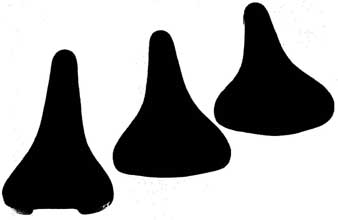
PHOTO 1 Three basic saddle shapes: left to right, Avocet Gel-Flex men’s
racing saddle, Avocet Gel-Flex men’s touring saddle, and Avocet Gel-Flex
women’s saddle.
Your first ride on a brand-new leather saddle can be a painful experience. It feels like it was carved from wood—hard wood at that. After a few thousand miles of riding and liberal applications of Brooks Proofide or some other leather preservative, the leather takes a permanent deformation from the pres sure of your ischial tuberosities. When this finally happens, you treat the saddle like an old friend and move it from one bicycle to the next.
In our modern, fast-paced world, not everyone is willing to be uncomfortable for six months, so Brooks and Ideale now sell pre-softened versions of their top models. The pre-softening shortens the time for the leather to take a permanent set. Ideale calls its pre-softening the “Rebour process” after Daniel Rebour, who edited Le Cycliste for so long and did the beautiful pen and ink drawings that are so valuable to bicycle historians.
Tensioned leather saddles are quite comfortable when they’re properly broken in. They give firm support with minimum friction and they “breathe” a bit on hot, sweaty days. At the same time they have liabilities. They’re firm, even when well broken in. They can’t be left out in the rain or the leather rapidly deteriorates; most users carry a plastic saddle cover for wet weather. The Proofide, even when applied only to the inside, stains your shorts (one reason why traditional shorts are black). Leather saddles are heavy compared to modern plastic saddles and because they’re handmade, they’re expensive.
Plastic Foundation Saddles
Most original equipment saddles fall into the broad category of plastic foundation saddles. There’s a wide range to choose from. Selle is the Italian word for saddle and Italian companies (e.g., Selle Italia) dominate the plastic foundation saddle business. They make plastic saddles to order in a bewildering array of models, shapes, qualities, prices, widths, shapes, firmnesses, rail materials, cover materials, and colors. Specialized and Pearl Izumi saddles are made in Italy to the specifications of the importers.
The pattern for Italian saddles is that most models are available in racing and touring, men’s and women’s, and firm or soft versions. The soft version is usually a beginner’s model and it’s less expensive.
There’s a subset of American and Taiwanese gaspipe-quality saddles that have a steel pan instead of a plastic shell. They’re so uncomfortable that you can’t ride the bicycle for more ½ hour at a time.
The Unica-Nitor was the first successful plastic saddle that I noticed. It was light, waterproof, narrow and rock hard—strictly for macho racers. Then people began to work them over with a drill. If you drilled just the right number of holes in the ischial area, it would conform to the shape of your backside and it was almost comfortable. In the mid-1970s, padded models appeared with Vs inch or so of foam padding over the nylon base. This was topped with a vinyl cover, or leather in the top models. The next step was to thin out the nylon under the ischial area to spread out the pressure point. Finally, Avocet came out with the “two-bump” anatomic saddle, which had thicker padding over the thinned out area. Avocet has a patent on the combined thin shell-thickened padding design.
Gel-Padded Saddles
In 1975, Cool Gear brought out “The Seat,” which had a nylon base and three little packets of ski boot liquid gel under a vinyl cover. There were the usual start-up problems. Just about when they had it all sorted out, the factory burned down. By that time, Avocet had pretty much taken over the quality saddle aftermarket. I didn’t see anything more of gel- padded saddles until 1983 when the Pearl Izumi Flolite appeared. In 1986, Avocet introduced the Gel-Flex saddle. I used an early Gel-Flex saddle on my British Columbia tour and found it very comfortable. Now the Italian selle companies offer an array of gel-padded saddles with words like “visco-elastic polymer” to describe the gel.
___ Saddle Construction ___
A saddle has a pair of rails that attach to the seatpost and support either the front and rear frames of a tensioned leather saddle or the shell of a plastic saddle. Ten years ago, saddles had either two or four rails. The rails were round rods or flat bars. They were spaced 43mm or 27mm apart. All of the diversity ended when Sakae made inexpensive, alloy, micro-adjusting seatposts and the OEM and aftermarket buyers began to insist on them. These require two 7mm diameter rails spaced 43mm apart. Virtually all of today’s saddles now use this construction and saddles no longer come with clips to attach them to straight seatposts. If you need a clip to attach your new saddle to an old straight seatpost, your bike store probably has a drawer full. The rails on most saddles are made of steel. Sometimes there’s a top model available with aluminum rails that weighs about 80 grams less and costs about $10 more. See Table 1 for a description of the materials used in various saddle models.
___ Saddle Dimensions ____
There are three important dimensions on a saddle: the overall length, the width at the rear, and the width at the halfway point. This last dimension is informative because a wider mid-width gives you more support, which is comfortable on short rides and chafes you on long rides. FIG. 1 illustrates how these dimensions are measured and Table 1 provides this kind of information for several current models.
TABLE 1. Saddles [coming soon]
____ Cover and Shell Material ____
Leather is the best cover material if you keep your bicycle out of the rain. Leather “breathes” and it doesn’t get slippery from sweat. Some of the top-quality saddles use buffalo leather. Some saddles have suede leather but these become smooth leather very rapidly. Nylon or Lycra cloth makes a less expensive cover that stretches and resists water. Vinyl is the least expensive and least pleasant cover material. It doesn’t “breathe” at all and it gets slippery with sweat.
If you leave your bike out in the rain a lot, you should buy a vinyl-covered saddle. Padded covers are available from Spenco and others to fit over your present saddle. I don’t like the idea. If the cover slides around at all, your bike is harder to control. I’d rather buy the right saddle with the padding or gel built in, which is also lighter.
The shells of the less expensive plastic saddles are made from polyethylene, while the more expensive models use nylon. The shell is often thinned out in the ischial area to spread the pressure.
_ Firmness, Thickness, and Weight _
The firmness or softness of a saddle is determined by a combination of factors: the density of the padding, the thickness of the padding, and the flex of the shell. I don’t have the instruments to measure firmness, but I wanted to give you a feel for the differences, so I poked my thumb into the padding at the ischial area. This unscientific measurement is the basis for the firmness ratings found in Table 1. Obviously, my thumb test cannot produce a precise prediction of how each saddle will feel after you’ve spent several hours riding on it.
The total thickness of the shell, padding, and cover of each test saddle was measured with calipers at the ischial area and recorded as padding thickness in Table 1. The weights shown in the table are for the models with steel rails. All tensioned leather saddles include a nut at the front to let you increase the tension as the leather stretches with age. A few plastic foundation saddles also include a tension adjuster. This feature is also noted in the table.
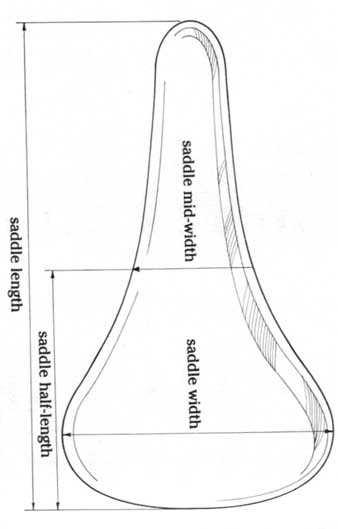
FIG. 1 Saddle dimensions.
___ Saddle Makers ___
Brooks and Ideale make tensioned leather saddles. Avocet, Pearl Izumi, and Specialized have saddles made offshore to their specifications. Selle Italia, Selle San Marco, Selle Royale, and Vetta make millions of saddles for the OEMs and thousands of saddles for the aftermarket. The Taiwanese make large numbers of inexpensive OEM saddles, but they’re generally the kind that you ought to be replacing.
Avocet -- Avocet is a major supplier of aftermarket saddles. They have the most complete selection and a straightforward naming system. There are three models, and each model includes a racing, a touring, and a women’s version. Model I saddles have a softer cushion and a more flexible shell; they are intended basically for beginners or short-distance cyclists. Model II saddles have denser foam padding and a firmer nylon shell. Gel-Flex saddles have a horseshoe-shaped band of Spenco gel.
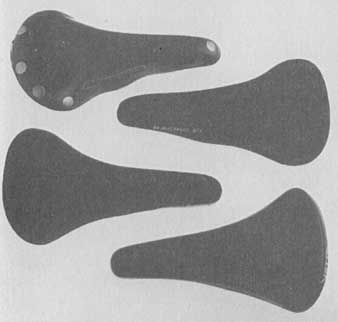
PHOTO 2 Racing saddles: top to bottom, Brooks Team Professional, Pearl Izumi
Flolite Model 300, Selle Italia Super Turbo, and Vetta Racing.
Avocet has a long-standing dream of producing “Made in America” bicycle components. They built a large, efficient saddle factory in California and mass- produced Avocet-USA saddles there for two years. The low-priced competition became too fierce in 1986 and Avocet moved the factory offshore.
Brooks -- Brooks has been making bicycle saddles since 1866. The Brooks catalog still shows wide, sprung “roadster” saddles. There are five racing and sport touring models in the aftermarket. The lightweight Team Professional has distinctive Vs-inch-diameter copper rivets. The Professional has 7/16-inch-diameter copper rivets. The B-17 is available in wide touring and narrow racing versions, but it only has mingy little 1/4-inch-diameter rivets. Women should know that there’s a new Professional S model designed just for them. If your shop doesn’t stock it, nag the owner.
In bygone days, people used to take their leather saddles apart to torture and beat them to hasten the breaking-in process. The large-diameter rivets allowed the saddles to be reassembled. Today, Brooks doesn’t need large- diameter rivets any more than Levis need riveted pockets or Marines need Sam Brown belts. Brooks got tired of seeing Ideale get all of the sales of pre-softened saddles. They now offer pre-softened versions of the Team Professional and the Professional S for about $10 additional.
Ideale -- Ideale is the French equivalent of Brooks. They fell on hard times a few years ago and there were bankruptcy “sales.” The company has barely survived and it’s now part of Zefal. They sell two saddle models: the narrower 90 and the wider 92. Both are available with Rebour pre-softening.
Pearl Izumi -- Despite the Japanese name, Pearl Izumi saddles are made in Italy by Selle Royale. There are three models. Model 100 is the softest touring saddle. Model 200 is the firmer touring saddle and Model 300 is the firmest racing model. All three models use a Vs-inch-thick layer of Flolite ski boot liquid, which actually flows under pressure. The Pearl Izumi Flolite got raves for comfort in Bicycling’s saddle test in 1984.
Selle Italia -- Selle Italia makes dozens of models and the importers often specify slightly different versions. The Turbo is the racing model. The Super Turbo has a perforated (sometimes textured) cover. The Bio Turbo is the racing model with gel padding. The Tri-A is a slightly wider Turbo. Selle Italia’s Turbo racing saddles are a bit less firm than Selle San Marco’s Concors. They also have a different shape. Most riders pick one style or the other and stick with it. Most Selle ltalia saddles are available in women’s models and in higher- priced, lightweight versions with aluminum rails.
Selle San Marco -- The name Concor is applied to a whole range of racing saddles made by Selle San Marco. They also make the classy Rolls racing saddle with brass-plated rails, a buffalo cover, and a gold nameplate. The Regal is a plastic saddle disguised with large copper rivets to look like a Brooks Team Pro. It’s available with a perforated cover.
Specialized -- Specialized got into the saddle business in 1985. Avocet got into the tire business in 1986. You can draw your own conclusions. It has certainly provided more competition. Specialized saddles are imported from Italy. There are three models: Lambda for touring, Delta for racing, and Carina for women. Each model comes in a standard and an S version. The S version has firmer shell material and a leather cover. All Specialized saddles have thicker padding in the ischial area, but it’s set into depressions in the shell, giving a smooth top cover.
Vetta -- There are three series of Vetta saddles in the aftermarket: Racing, Anatomic, and Nuvola. Each series is available in men’s, women’s, or Maxi models. The Maxi is wider and has softer padding. Vettas are also available with vinyl covers at a lower price. The Vetta Nuvola (nuvola is the Italian word for “cloud”) has the gel material enclosed in a foam cavity and covered with latex. It’s available in racing, touring, and women’s models.
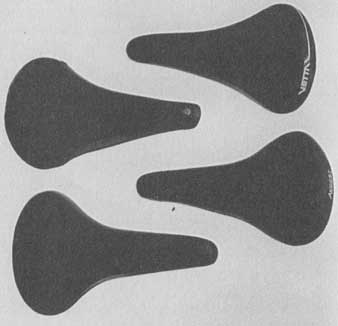
PHOTO 3 Touring saddles: top to bottom, Vetta Nuvola, Ideale Model 92 with
Rebour treatment, Avocet Touring Model I with bumps, and Specialized Lambda
S.
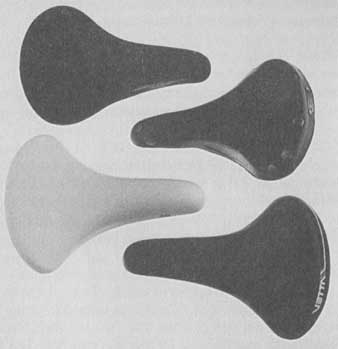
PHOTO 4 Ladies saddles: top to bottom, Avocet Gel-Flex, Brooks Team Professional
S, Specialized Carina S, and Vetta Ladies.
_____ Frank’s Favorite Saddles _____
I rate saddles with considerable misgiving because there’s no good reason why a saddle that suits me should suit you. Before writing this section, I was using Avocet Gel-Flex touring saddles on my two touring bicycles. I’ve done several cent and a long tour on Gel-Flex saddles. I had a well broken in Brooks Professional on one racing bicycle and a Specialized Delta S on the other. I had an Avocet Touring II with a sheepskin cover on my commute bicycle. The idea was to keep my suit pants from getting shiny.
For this section, I tried three of the new saddles to get a “feel” for their performance. The Pearl Izumi Model 100 was the best of the three. It feels very firm at first and then it molds to shape. I pedaled the Model 100 on a 75-mile ride and found it comparable to the Avocet Gel-Flex. The Selle Italia Bio Turbo was close, but a bit less comfortable than the Gel-Flex. The Vetta Nuvola Maxi is an extra-wide touring saddle and I found it uncomfortable after 15 miles. My son
Ben commented that I should pick one saddle and install it on all my bicycles. Your leg muscles get used to the support of a particular saddle. Switching saddles is hard on you. If your present saddle feels good to you, stick with it.
Seatposts
Seatposts are also called “seat pins” or “seat pillars.” There’s almost no performance difference between expensive seatposts and the lower-priced versions. Buy the one that looks best to your eyes and your pocketbook. The big improvement in the past five years is the availability of inexpensive micro- adjusting alloy seatposts.
Before these became available, seatposts were a straight tube of steel or aluminum with a reduced top section. A seat clamp fit on top of the seatpost and locked onto the saddle rails. There were about 50 serrations in the seat clamp, which meant that the minimum change in saddle tilt was 7 degrees. The odds were that this would be 3 degrees too high or 4 degrees too low. Many cyclists can notice a change of just a few degrees. Ideale, Brooks, and Simplex make clamps with infinite adjustments but they aren’t widely used.
The old Campagnolo Record micro-adjusting seatpost, introduced in the 1950s, solved the adjustment problem. By the mid-1970s, you could buy Campy- copies from Sakae, Zeus, and others. The old Campagnolo Record (now called Nuovo Record) isn’t that nice a seatpost because it’s hard to adjust. You have to grope under the saddle with a wrench to tighten the two bolts. Campagnolo makes a special bent wrench just for the purpose.
The Sakae Foursir (Laprade) seatpost, introduced in 1980, could be adjusted from below and it was available in a range of prices. Now you can get Laprade-style seatposts from American Classic, Shimano, Sugino, SunTour, and even Campagnolo.
Many seatposts have a fluted strut that slides in a bit easier. In 1981, Shimano introduced an aerodynamic AX seatpost with a narrow pillar. It didn’t improve wind resistance very much, but it looked pretty and Shimano still makes it. Campagnolo’s new C-Record, Victory, and Triomphe seatposts also have a narrow pillar.
_____ Seatpost Diameter ___
There are about a dozen standard seatpost diameters, starting at 25mm and then going in 2mm steps from 25.4mm to 2 7.4mm. There’s not a whole lot of scope for standardization because seatposts have to fit into seat tubes. Seat tube inside diameters vary with the wall thickness and the tube butting. Just make sure you measure first and buy the right size. “Close” isn’t good enough. Table 2 shows which models are available in which diameters.
__Seatpost Length and Weight__
You need about 2 inches of seatpost buried in the seat tube. Most seatposts have a minimum insertion mark. More insertion than that is just extra weight. If you have more than about 4 inches of exposed seatpost, it usually means that your frame is too small. Many racers like small frames because small frames are stiffer and the rider can lean lower. I think that small-framed 10-speeds with extra-long seatposts and stems look ridiculous. Lots of serious riders disagree with me. Mountain bikers use smaller frames than 10-speeds for a number of good reasons.
Campagnolo makes short (130mm) and standard (180mm) seatposts. Sakae makes three lengths: 190mm, 220mm, and 250mm. You can now buy 330mm (13-inch) high-quality mountain bike seatposts from Sakae, SunTour, and others. Some seatposts co with insertion graduations, but I simply put a scratch on my seatposts to mark my insertion level. The range of lengths available for various seatpost models is shown in Table 2.
Seatpost weights aren’t too exact. To make the different outside diameters, the makers machine more aluminum from the outside. The hole remains the same diameter. Table 2 shows the weight of the 27.2mm-diameter short model.
____ Seatpost Makers ____
The large gruppo makers are now supplying seatposts and stems. However, they are both low-technology items, so an efficient small maker can survive.
American Classic -- This American-made seatpost with a Laprade clamp is the lightest available.
Campagnolo --There are five Campagnolo seatposts available. All but the Nuovo Record now have Laprade-type clamps. If you can find one, the Triomphe is the bargain. It has the same svelte styling as the C-Record at half the price.
Sakae -- Sakae dominates the seatpost business. They make seven different micro-adjusting seatposts for the OEM market. The model that Sakae calls the Foursir and everyone else calls the Laprade is the one you’ll find in the aftermarket. For the mountain bikers, Sakae makes a seatpost with a quick- release that lets you adjust the tilt and the fore and aft positioning on the move.
Shimano -- Shimano still doesn’t include seatposts in their gruppos. There are two Dura-Ace models available: the old AX from the aerodynamic era, and the Dura-Ace EX with a round fluted pillar.
SunTour -- SunTour’s seatposts are made by Sugino. The Superbe Pro model uses a Laprade-type clamp. The extra-long mountain bike model is widely available.
_____ Some Favorite Seatpost _____
Picking my favorite seatpost is no big deal. Most of my bicycles have Shimano Dura-Ace AX seatposts because I like their looks.
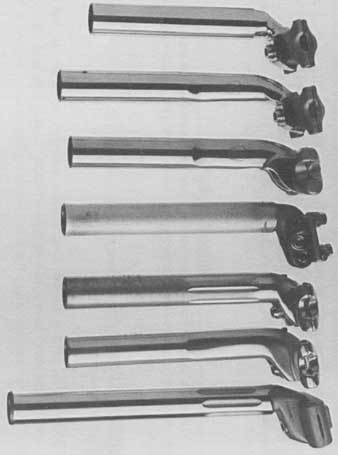
PHOTO 5 Seatposts: left to right, Campagnolo C-Record (130mm), Campagnolo
C- Record (180mm), Campagnolo Triomphe (1 70mm), Campagnolo Nuovo Record
(170mm micro-adjusting), Shimano Dura-Ace B-’T (170mm), Shimano Dura-Ace
A-1 (170mm), and Sakae CT Extra Long (250mm).